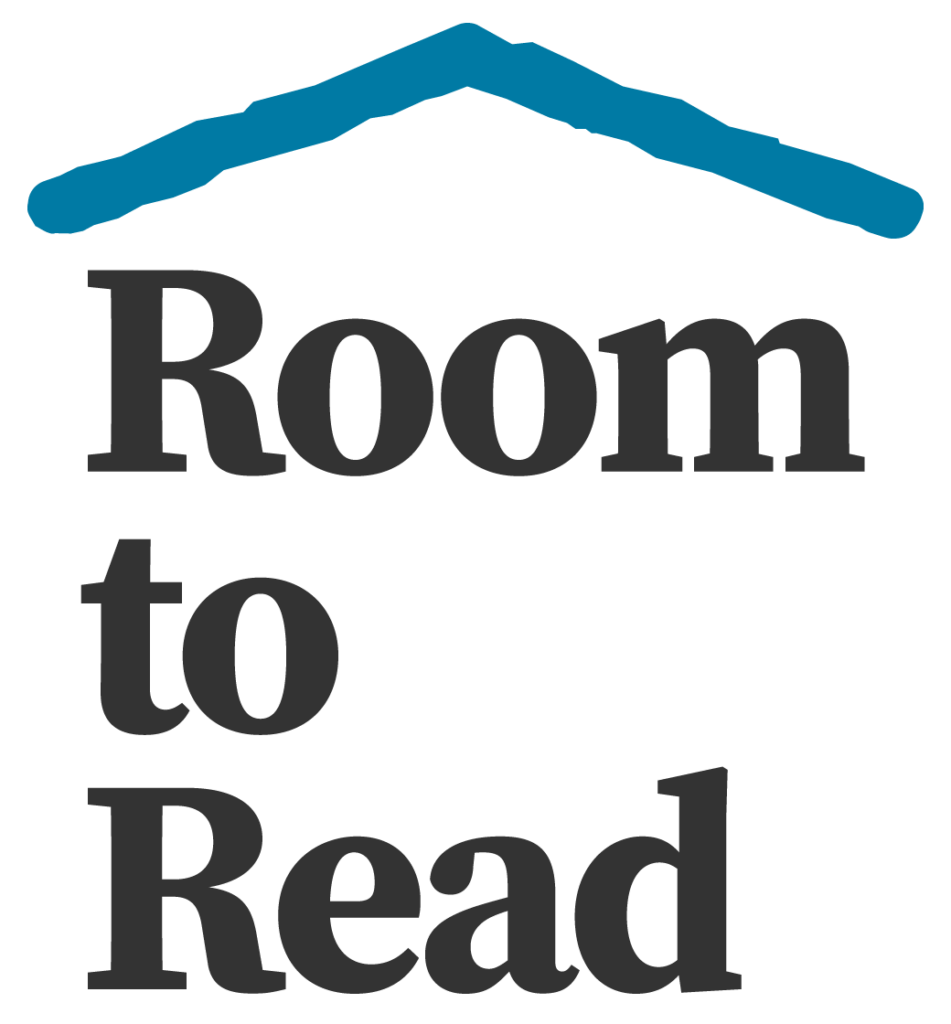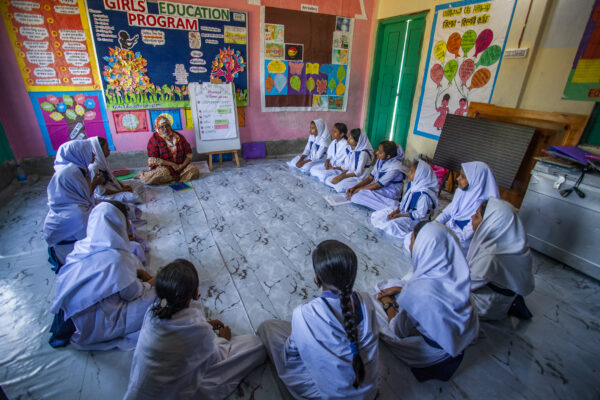Room to Read is one of TGE beneficiaries. To uncover the organization’s mission and outlook for the future, we interviewed Laurie McMahon, the Chief Development and Communications Officer, to find out more about the ways in which they contribute to making a world free from illiteracy and gender inequality.
Room to Read’s mission is clear and compelling: “World Change Starts with Educated Children®.” This mission is at the heart of the organization’s work, driving efforts to eradicate illiteracy and gender inequality in education across the globe.
Room to Read focuses on transformative education for children, particularly those facing deep educational, gender, and economic inequities. To date, the organization has reached over 45 million children in 24 countries. Under the leadership of CEO Geetha Murali, who has been at the helm for six years, Room to Read has made significant strides in both literacy and gender equality.
The name “Room to Read” initially referred to physical libraries. However, a recent rebranding reflects the organization’s broader scope. It now symbolizes the space for children to learn, grow, and aspire, moving beyond just a physical space to a metaphor for educational opportunities.
Core Programs and Achievements
The organization’s two primary programs are the Literacy Program and the Gender Equality Program. The Literacy Program targets primary school children, offering teacher training, local language children’s books, and library establishment. The Gender Equality Program supports secondary school girls, providing life skills classes, mentorship, and community engagement to help them stay in school and reach their full potential.
Room to Read surpassed their goal of reaching 40 million children by the end of 2024, achieving 45 million children ahead of schedule.
Resiliency and Sustainability
Room to Read’s resilience was significantly tested during the COVID-19 pandemic. The organization quickly adapted its programs to ensure continued access to education even when schools were closed. They implemented creative solutions such as using SMS and video conferencing to keep educational materials flowing to students, even in hard-to-reach regions. In some cases, they went so far as to deliver books via camel and boat. This adaptability highlights their commitment to sustainability, as Room to Read seeks to ensure children’s education continues, no matter the external challenges.
During the COVID-19 pandemic, Room to Read adapted quickly, using innovative methods such as SMS, video conferencing, and even delivering books by camel and boat to continue reaching children in need.
Looking ahead, Room to Read plans to expand through partnerships rather than establishing new offices in more regions. This strategy allows them to leverage local expertise and scale their impact more efficiently.
Evaluating Program Effectiveness
Room to Read has developed rigorous methods for evaluating the impact of its programs. They focus on metrics such as literacy rates and school retention rates, which allow them to measure whether students are progressing as expected. For example, Laurie McMahon mentioned that they track progress to ensure children in their programs are developing literacy skills at appropriate levels for their age. Additionally, their gender equality programs measure the impact of life skills training and mentorship by tracking school completion rates for girls, which helps them refine and improve the program over time.
Intersection of Gender Equality and Education
Gender equality is at the core of Room to Read’s mission, particularly in regions where girls face significant barriers to education. The Gender Equality Program goes beyond traditional academic support by offering life skills classes, mentorship, and community engagement to empower girls to stay in school. These interventions are designed not only to support girls in completing their education but also to equip them with the confidence and skills necessary to make decisions about their future. Room to Read’s efforts in this area are crucial in breaking the cycle of poverty, as educating girls leads to broader societal benefits, including improved health outcomes and increased economic opportunities for women.
Addressing Challenges and Future Goals
Despite the benefits, working with governments can present challenges. These include navigating bureaucratic processes and aligning with varying educational standards. Room to Read has tackled these challenges by employing a local leadership model. Their teams, comprised of individuals from the regions where they operate, are well-versed in local contexts and can effectively manage these partnerships.
Room to Read aims to further expand their reach by strengthening these government partnerships. This includes entering new regions and scaling their programs to meet the growing educational needs of underserved communities.
How to Get Involved
There are several ways individuals and organizations can support Room to Read. Besides direct donations, supporters can volunteer their skills for various projects, from social media to tech initiatives. The organization values meaningful volunteer contributions and operates with a lean overhead to ensure resources are effectively used.

Impact of TGE in Cross-Border Collaborations
Transnational Giving Europe (TGE) plays a significant role in facilitating Room to Read’s cross-border efforts. By providing a platform for tax-efficient donations across different European countries, TGE helps Room to Read connect with a broader donor base. This support is crucial for expanding their programs and reaching more children in need.
The collaboration with TGE allows Room to Read to maintain and grow their donor relationships across borders, which is essential for sustaining and scaling their initiatives. The ease of making cross-border donations through TGE ensures that donors can contribute to Room to Read’s mission in a seamless and impactful way, ultimately supporting their efforts in improving literacy and gender equality globally.
A Call to Action
As Laurie McMahon emphasizes, “Education is the solution to many of the world’s problems.” Investing in education yields high returns and helps address global challenges such as climate change and inequality. Room to Read invites everyone to be part of this transformative mission, whether through donations, volunteering, or spreading awareness.
For more information on how to get involved, visit Room to Read’s website.

